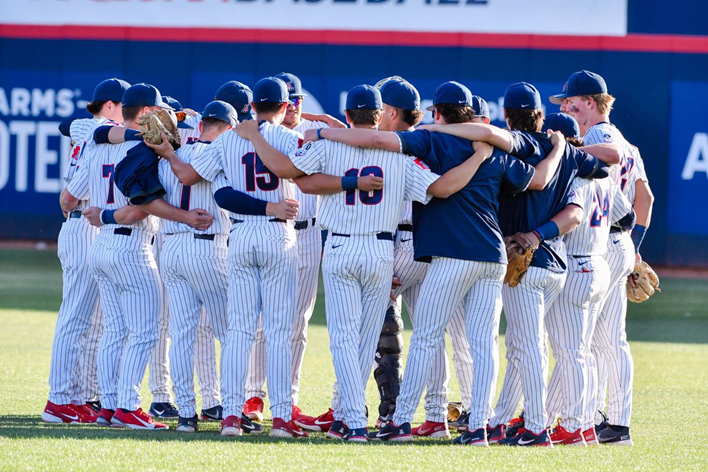
A lot of high school athletes are asking themselves this question this summer. Why am I not getting any college baseball offers or commitments? Is there something going on? The quick answer is YES!
You have heard of the “college transfer portal”. But you have assumed it is something to do with college baseball and has nothing to do with you in high school. Well, that is not completely accurate. What’s happening at the college level with the transfer portal has wide ranging implications, including your desire to play college baseball.
First let us review what is happening at the college level.
In 2021, NCAA’s Division I Council voted to approve a rule change that allows all Division I baseball players a one-time waiver to transfer to another program and be immediately eligible to play. The decision ended a lengthy process to bring some uniformity to the transfer rules among various sports and provide more freedom for college athletes. Previously, baseball players were required to sit out a season after transferring. This served as a deterrent to transfers from one D1 program to another. Now, under the new waiver, if you enter the transfer portal by July 1st, you are eligible to transfer for the following year and play ball.
At some point, I had heard that this change was COVID-related, but the proposal has been on the table and evaluation for a few years. The waiver was originally formally proposed in February 2020 by the NCAA’s transfer working group. In April 2021, after several delays due to the pandemic and the cancellation of 2020’s winter and spring sports championships, the NCAA finally passed the transfer reform it had spent several years developing.
There are many reasons why an athlete enters the portal, including among others, lack of playing time and perhaps issues with the coaching staff. Sometimes, a player may even reach a conclusion that the school or the team was not at all what he anticipated, and it is not the right fit for some reason.
Well, with the waiver in place, today there are over 3,000 players in the transfer portal, and it is highly unlikely the waiver is going away. The genie is out of the bottle and college athletes are transferring and college coaches are scouring the transfer portal for players. Information, statistics and video on Division 1 college athletes is readily available through third party sources.
It is true that the waiver provides student-athletes and coaches more freedom, but it has had many other far-reaching implications, some you read about and others not so much. It is the latter that is of relevance to high school athletes. It is like a silent creeper.
So, what does this all mean for a high school baseball player looking to play college ball?
Unfortunately, quite a bit. However, since it is a tertiary effect and it is happening at the college level, most high school athletes and parents are either unaware or do not believe it’s impacting them. But it is and here is how.
A college coach looking for new players to fill his roster is much more likely to pursue another college-level player, whose stats, performance, reputation and playing videos at the college level are widely available, than pursue a more relatively unknown and untested high school player. Today a baseball coach is can log into the Synergy Sports website and evaluate a freshmen who batted .290 in a collegiate conference with known qualities at the college level. Now compare this with the risk of a high school player he’s not sure about.
It is really that simple. In conversation after conversation with college coaches and recruiters they are all saying the same thing.
You might think to yourself that you weren’t planning on Division 1 anyway, so this doesn’t impact you. Once again, this has wide ranging implications. A Division I athlete looking to transfer may take a D II or Division III roster spot. Believe me this impacts all high school athletes.
Bottom line is fewer potential commitments and more upperclassmen ahead of them (due to COVID-19) is creating a difficult recruiting environment for high school players. Given the circumstances, today’s high school athletes with aspirations of playing college baseball need to work even harder and take their training even more seriously in order to stand out.
You need to hit the weight room and throw harder, command better, control the ball better, run faster, hit harder. It’s obviously about skill, but it’s equally if not more about power and being more explosive. Your competition is no longer just your classmates, your competition is now also bigger more skilled athletes in college and you’re going to have to differentiate yourself from the pack.
In the words of Pitching Coach Bomber from JUCO powerhouse Sac City Community College (in CA), here are a few additional suggestions to keep in mind:
-
- Demonstrate at least one skill that stands above your peers
- Demonstrate that it’s about the “we” and not about the “me”
- Demonstrate your total and complete desire to play ball
- Demonstrate that you’re adaptable and coachable
The bottom line is, even though it’s a bit more difficult, plenty of high school athletes will play college baseball. However, more than ever it’s really about how badly do you want it.
By Bahram Shirazi and Nunzio Signore (Owners at RPP Baseball)
Sources:
Enter your email below to be added to our email list!

